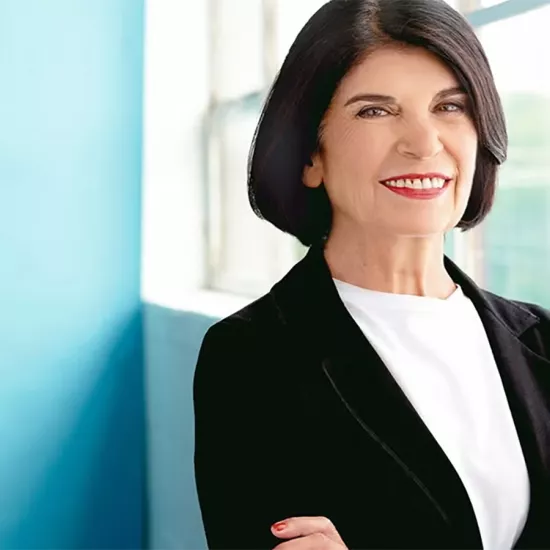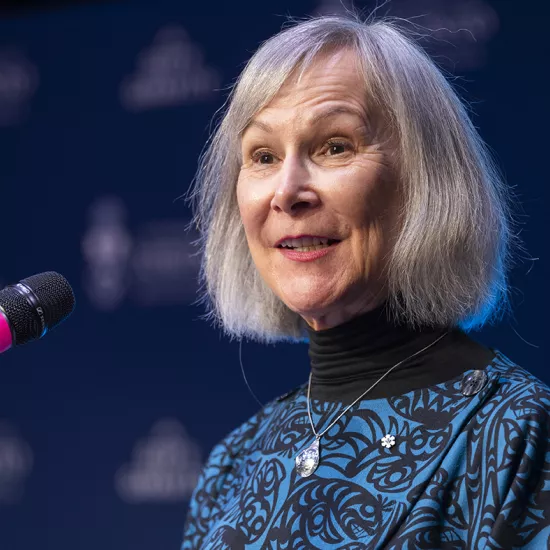To beat COVID-19, look to the past, says medical anthropologist

As Canada launches the largest mass vaccination program in the country’s history, COVID-weary Canadians are waiting with anticipation, hope and many questions: Is the vaccine safe? Will it work? Who will get it and when? What do we have to worry about?
Those hoping to get on with post-pandemic life are eager to take a jab to the arm, but others aren’t so sure. Governments and health agencies face a big challenge convincing the vaccine-hesitant to roll up their sleeves.
For guidance on the way forward, authorities should look to the past, says one U of T Mississauga expert.
“Incorporating anthropology and history can help us better understand why some people might be hesitant,” says medical anthropologist Madeleine Mant, who has unique insight into the challenges facing health authorities as they prepare to roll out the COVID-19 vaccination campaign. The UTM lecturer studies diseases of the past and has undertaken a study to gauge how U of T students feel about the COVID-19 vaccine today.
Looking to the past
Mant sees many similarities between the current pandemic and other periods in history when society has faced large-scale health threats. Once rampant, infectious diseases like smallpox and polio killed many and left survivors with life-long complications before mass vaccinations made them a distant memory.
Mant is a colourful lecturer who often wears period costumes to teach lessons on historic maladies. In the classroom, she regales her students with gruesome stories of early smallpox inoculation trials that involved applying scabs and pus sampled from infected patients directly onto healthy recipients. The procedure, which originated in Asia, was first tested by English authorities in the 18th century on prisoners whose death sentences would be commuted if they survived the ordeal.
Though unsanitary by today’s standards, the success of those early British trials helped create a new direction for global disease control. Soon, inoculation of all infants in England became compulsory and the preventative measure spread to other countries. In Canada, the Hudson’s Bay Company and federal government launched a smallpox inoculation campaign to protect Indigenous and white settler populations in the west.
“The idea of seeing people with facial and skin scars from smallpox wouldn’t have been uncommon that long ago,” says Mant, who notes that the disease was largely eradicated by the early 20th century. Canada saw its last official case of smallpox in the 1960s.
“Thanks to vaccinations, smallpox is something that has disappeared from the public,” she continues. “It’s a success story of government intervention with funding for universal immunization campaigns.”
Survey says…

Despite what we know about the success and safety of vaccines, Mant’s ongoing survey of U of T students, in collaboration with physicians Dr. Alyson Holland of McMaster University, and Dr. Andrew Prine of Groves Memorial Community Hospital, reveals mixed feelings about the COVID-19 vaccine. Respondents to the online portion of her survey indicated overwhelmingly that they would be happy to receive the vaccine right away but personal interviews, conducted over Zoom, tell a different story.
In those interviews, some students said they were concerned about the speed at which the COVID-19 vaccine has been developed. Others reported fears about the vaccine ingredients or generalized concerns about its safety.
While many said they would still be willing to take it, there were caveats. Some said they would take it once it had been proven safe or effective, but the criteria for assessing that threshold for success remained vague.
Mant, who characterizes the student responses as hesitancy, not anti-vaccination sentiment, says that those same attitudes can be traced back to the mandatory smallpox inoculations of the 18th century.
“There were folks with concerns of bodily autonomy, and also folks that were anti-government,” Mant says. Those same ideas persist today. “A lot of it is about ‘what are you putting in my body?’”
While there is hesitancy, Mant says authorities should pay careful attention to what motivated early adopters of new vaccines.
“When I teach, I always talk about the fear,” Mant says. “I think that helps us understand the reaction to the vaccine so much better.”
Between 1.6- and 1.8-million children were enrolled in the polio vaccine trials of the 1950s, fuelled by the fears of parents who saw children “seemingly whisked away every summer,” says Mant.
“We have powerful images of children wearing leg braces, and people in full-body casts or in iron lungs that created a real emotional connection about who was vulnerable,” she says.
Those images helped drive parents to sign their children up for a yet unproven vaccine and spurred the success of large-scale public health campaigns like the March of Dimes.
“There was no cure, so preventing it became the most important thing,” she says.
Transparency, consistency and clarity
“Thinking about why somebody might be worried or confused about risk, or timing, is totally valid,” Mant says. “Clear and honest communication from health authorities and care providers will go a long way to ensuring widespread vaccine acceptance.”
“Speed shouldn’t be looked upon as a bad thing,” she continues. While the polio virus vaccines took years to develop, modern medicine has used those developments as a springboard to new discoveries.
Manufacturing standards, testing procedures and oversight are all light years away from the 18th century and the 1950s, as is the understanding of germs and how viruses and vaccines work in the body. Those developments have helped ensure a COVID-19 vaccine could be developed within a year of its discovery.
“Having a better understanding allows us to build upon knowledge to be faster and faster,” Mant says.
Safety has also been improved. “Now we have double- and triple- redundancy checks and better mass communication, and better understanding,” she explains. “Independent data safety monitoring boards look at the safety of what Pfizer, Johnson & Johnson and AstraZeneca are doing, so you’re not just trusting a manufacturer or government.”
Government and health care authorities will need to communicate all this and more to change the minds of the vaccine-hesitant, like the student respondents to Mant’s survey.
Mant jokingly taps her upper arm with two fingers and declares she will be at the front of the line when the vaccine is administered to the general public. But until then, she’s wearing a mask, washing her hands and staying home as much as possible.
“We know vaccines work. We know vaccines are for good the common good. We know that there is an ethical obligation to take one if you can to protect the people that can’t.
"The reason we don't have smallpox or see polio outbreaks in North America anymore is because folks have said 'yes' to vaccination campaigns," she says.
Like polio and smallpox, there is currently no cure for COVID-19.
“The best way to survive it,” says Mant, “is not to get it.”



